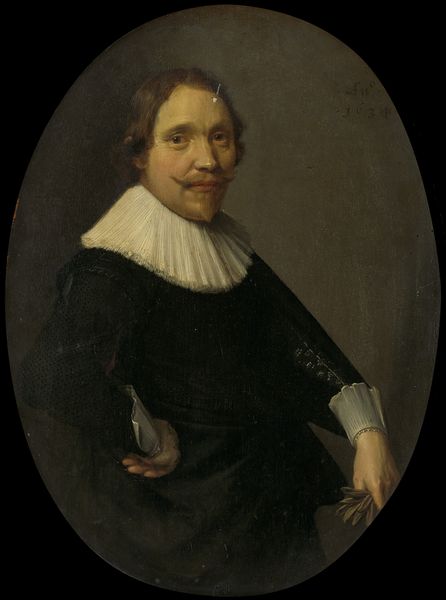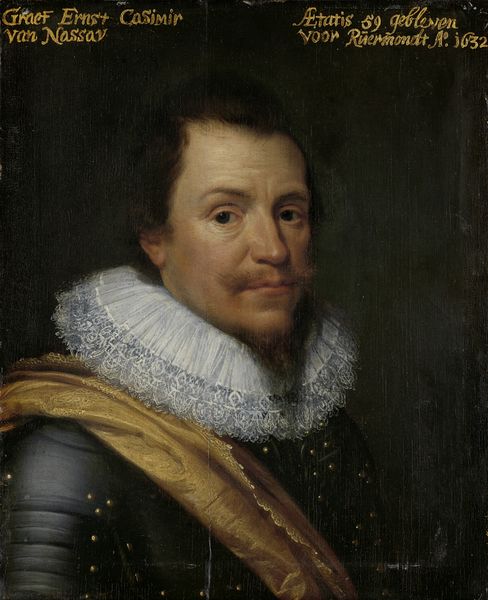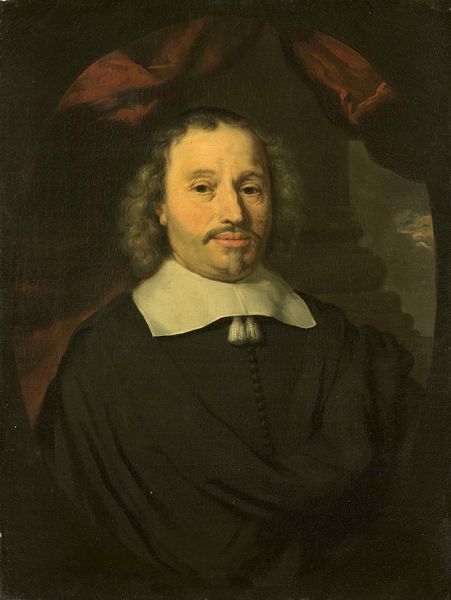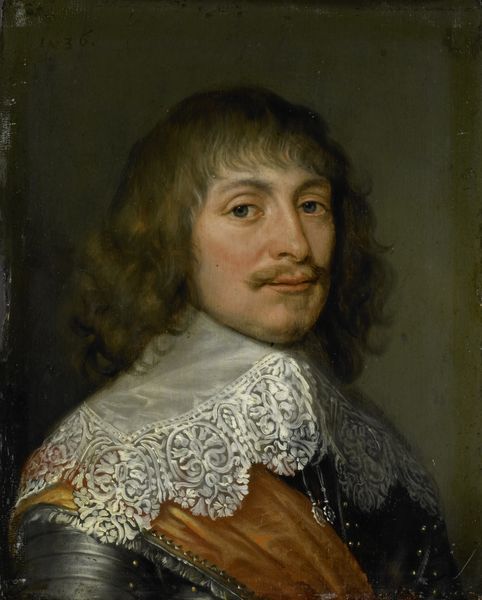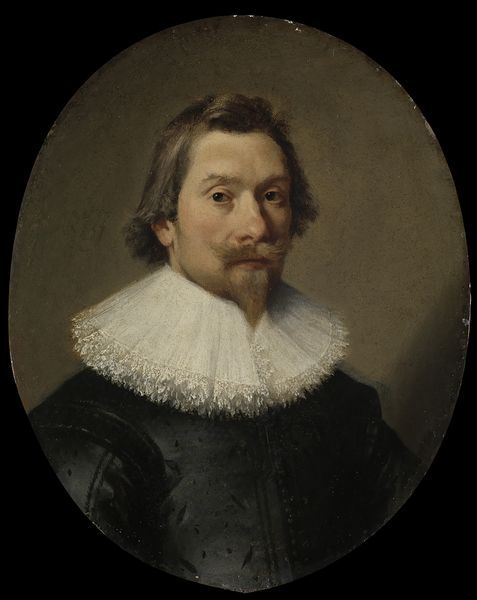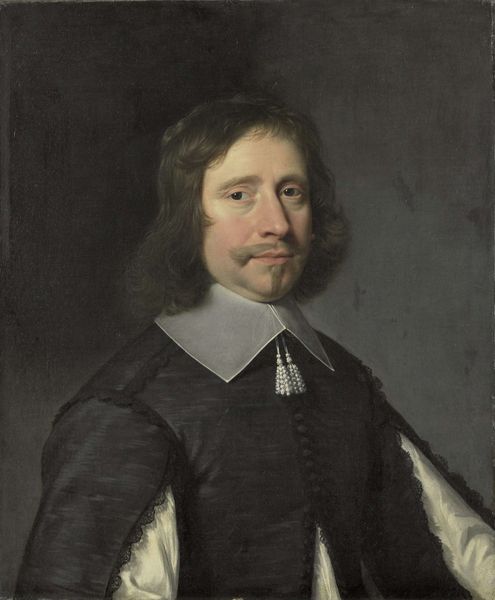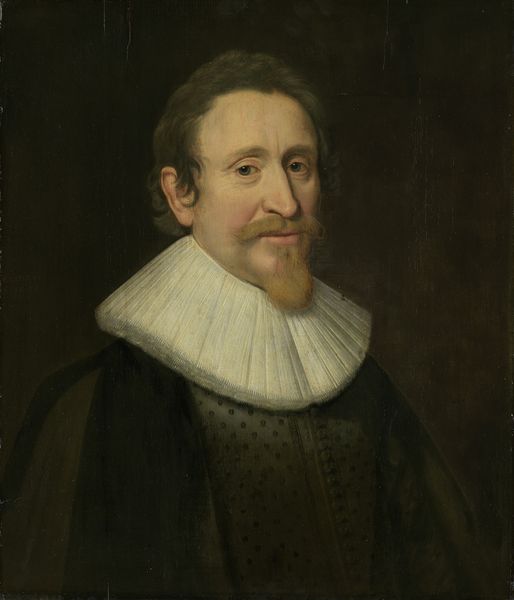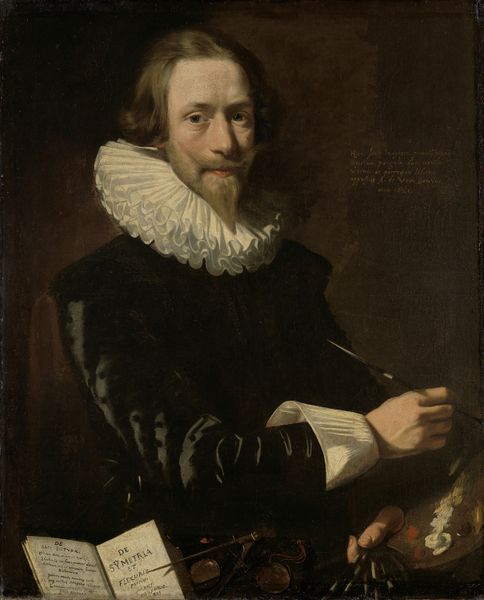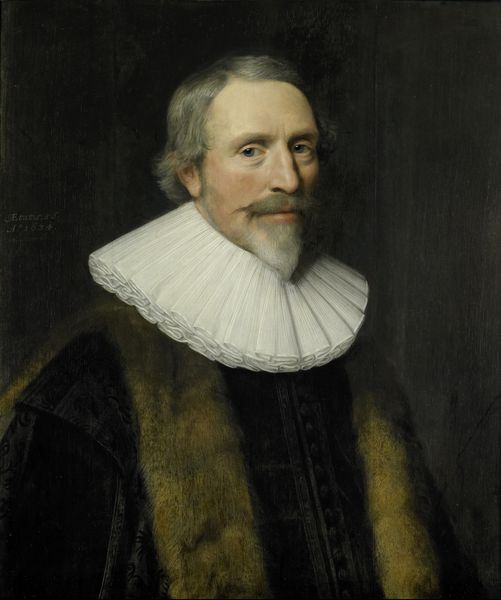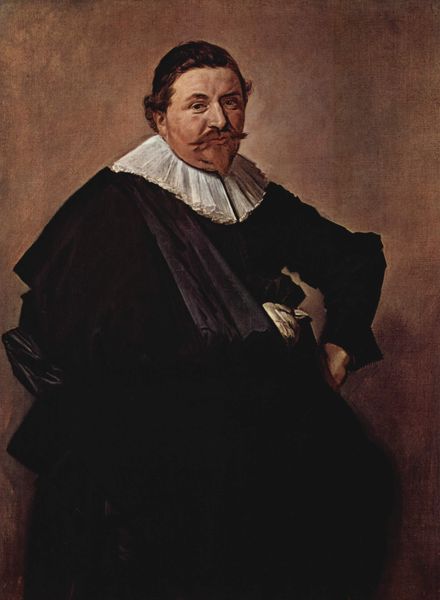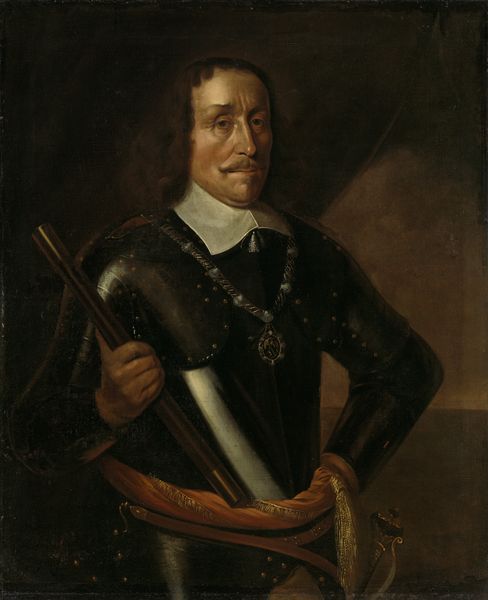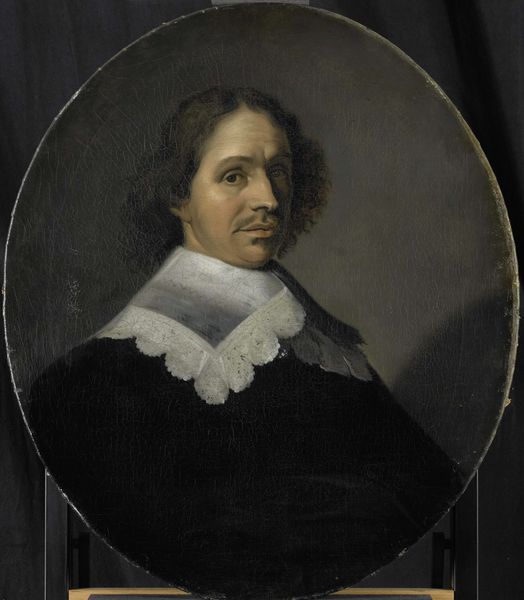
Portrait of Maerten Harpertsz Tromp (1597-1653) after 1640
0:00
0:00
painting, oil-paint
#
portrait
#
baroque
#
dutch-golden-age
#
painting
#
oil-paint
#
academic-art
Dimensions: support height 71.3 cm, support width 58.8 cm, outer size depth 5.8 cm
Copyright: Rijks Museum: Open Domain
Curator: Before us hangs "Portrait of Maerten Harpertsz Tromp (1597-1653)," painted after 1640 by Michiel Jansz. van Mierevelt. It’s currently housed here at the Rijksmuseum. Editor: My initial impression is one of muted dignity. The dark background makes the sitter's face and that ornate collar really pop, but there's a certain reserve. The subdued palette speaks to the subject's seriousness, doesn't it? Curator: Absolutely. Consider the historical context. Tromp was a celebrated Dutch naval officer during a period of intense maritime conflict. This portrait reinforces the ideals of masculinity, power, and national pride of the Dutch Golden Age, particularly during a time of upheaval against Spanish rule. The gold chain around his chest signals nobility, while the painting aims to express nationalistic ideas for a male audience in power. Editor: I am drawn to the meticulous detail in the lace collar. Look how Van Mierevelt captures the texture and subtle gradations of light and shadow! Semiotically, the lace, combined with the dark garment underneath, creates a dynamic contrast of opulence against the austerity required of military office. I would posit the painter uses this dichotomy to suggest Tromp contains the best of two supposedly opposed categories of character: the refinement of an aristocrat as well as the steeliness required of battle. Curator: Fascinating to see you read character into visual details! Tromp’s expression could be viewed through the lens of class and military obligation, even through trauma theory. He’s seen conflict, led fleets… does this controlled portrait betray post-traumatic stress? Did he identify with the war-torn colonies and oppressed peoples that Netherlands imperialism caused? The painting could also be viewed as a vehicle to show off white male leadership at any cost, furthering its legacy. Editor: But don’t you think the careful arrangement of light draws the viewer in towards a study of form, in the tradition of Dutch Golden Age portraiture? Perhaps Mierevelt attempts to subtly invoke an interior life, that inner turmoil that the portrait captures so subtly despite the limitations placed on its subject by pictorial tradition? Curator: Perhaps, yet these portraits always seem, in a sense, political statements, designed for specific audiences to shape the narrative around Dutch imperial aspirations and to downplay the atrocities that these ambitions cost. Editor: Indeed, art invites so many avenues of understanding. It's wonderful how it can function on a multiplicity of levels. Curator: Agreed. Hopefully, we've provided a taste of those layers.
Comments
No comments
Be the first to comment and join the conversation on the ultimate creative platform.
